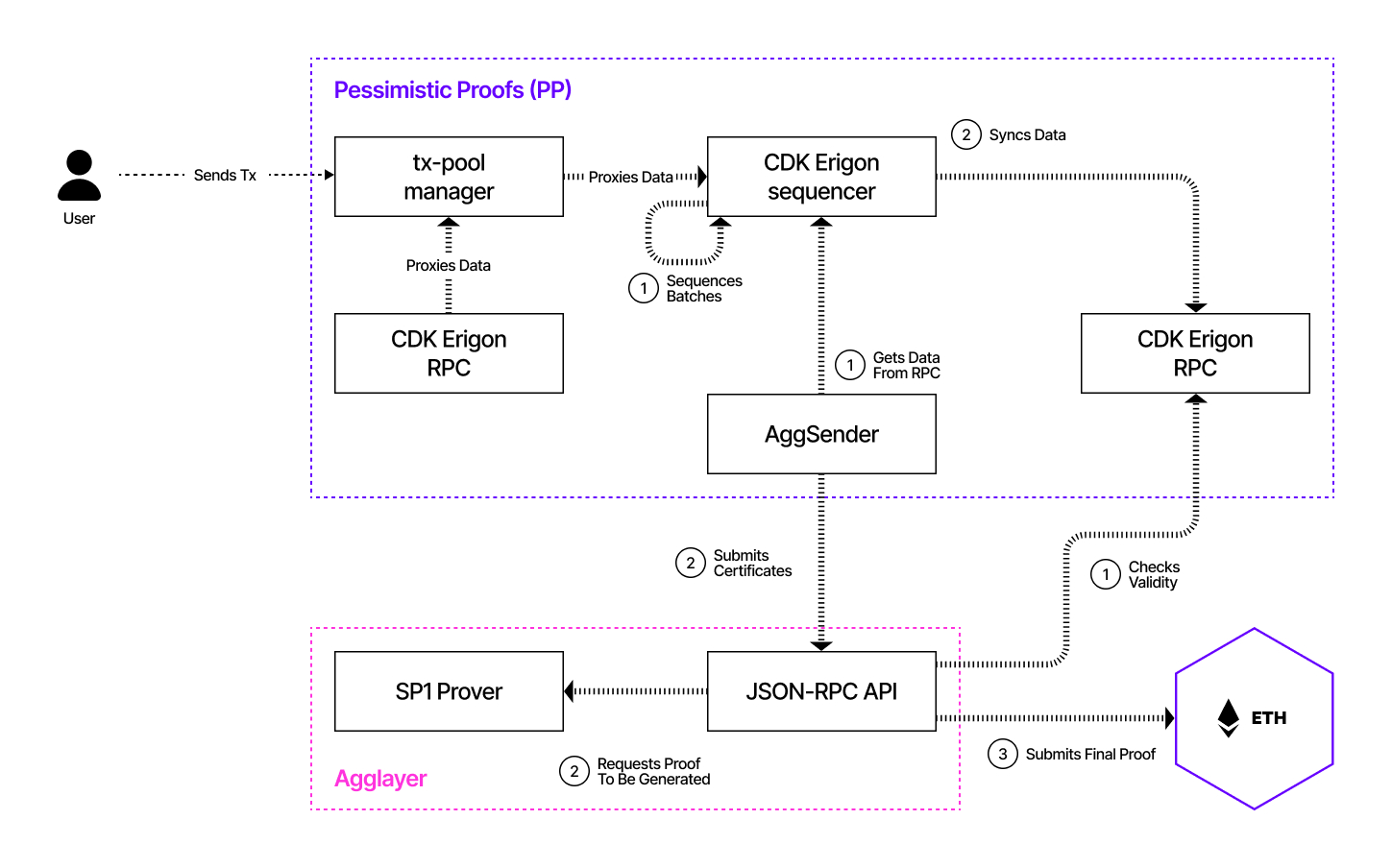Cdk pp highlevel arch
The figure below depicts a simplified, high-level view of the CDK chain architecture using pessimistic proofs and the flow of transactions through the system.

Transaction Flow¶
Below is a step-by-step flow of transactions from user submission to settlement on Layer 1 (L1):
- A user connects to the chain via a CDK Erigon RPC node and submits a transaction.
- The CDK Erigon RPC node sends the transaction data to the transaction-pool manager.
- The transaction-pool manager proxies all transaction data to the CDK Erigon sequencer.
- The CDK Erigon sequencer executes transactions, organizes them into blocks, and batches the blocks for further processing.
- Any CDK Erigon RPC node syncs transaction data from the CDK Erigon sequencer.
- The AggSender retrieves batch data from the CDK Erigon sequencer, uses this data to generate certificates, and submits the certificates to the Agglayer RPC.
- The Agglayer RPC validates the certificates against the transaction data stored in the CDK Erigon RPC node.
- Upon validating the certificates, the Agglayer RPC sends a request to the SP1 prover to generate a proof, including the necessary data (e.g., certificates).
- Once the proof is received from the SP1 prover, the Agglayer RPC submits it to L1 for final settlement.